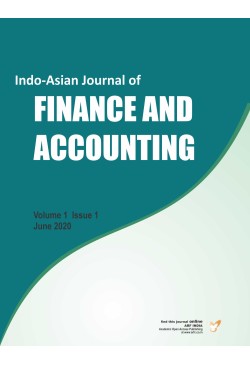Aim/Purpose–It is becoming clear that the existing ownership structure in commercial banks in Nigeria is inefficient because it fails to protect the owners’ interest as a result of dwindling financial performance leading to little or no payment of dividend. Based on this, the study investigates the effect of ownership structure and financial performance on dividend pay-out ratio of Nigerian listed commercial banks. Design/methodology/approach – The research design is causal comparative design. The population is fourteen listed commercial banks in Nigeria as at 31st December, 2017. The period covered is from 2009 to 2017 and secondary data source was employed. Data were retrieved from the banks’ annual statement of accounts. The study adopted the generalized least square techniques of regression for the analysis. Findings – The study documented that share owned by managers (managerial ownership) and shares owned by foreigners (foreign ownership) have negative but significant impact on dividend pay-out ratio of commercial banks in Nigeria. Concentrated ownership was reported to have negative and insignificant influence on dividend pay-out ratio of banks. Furthermore, shares owned by institutional investors have positive and significant effect on dividend pay-out ratio of banks. Also, after moderation with financial performance, managerial ownership and shares owned by foreign investors (foreign ownership) significantly influence dividend pay-out ratio positively except for ownership concentration which has positive effect but weak effect on dividend pay-out ratio of commercial banks. Meanwhile, after moderation institutional ownership now negatively, but significantly impact on dividend pay-out of banks. Research implications/limitations – The implication of the findings is that ownership structure and financial performance is a driver to increased dividend payout ratio of listed deposit money banks in Nigeria. Originality/value/contribution – Listed commercial banks are one of the most active sectors in Nigeria which help maintain liquidity in the Nigerian system. This sector which plays vital roles has experienced crises such as withdrawal of government fund into Treasury Single Account (TSA) and thus created a liquidity problem. These happenings cannot be disconnected from the banks’ ability or inability to continuously pay dividend to their shareholders.
Keywords: DivdendPayout, Ratio, Financial Performance, Ownership Structure, Agency Theory.
JEL Classification: D21, G34, G21, M41
Musa Adeiza Farouk, Latifat Abdussalam Abdul Fatah, Tijjani Muhammed Shehu and Abdullahi Ahmed Aliyu. (2022). Ownership Structure, Financial Performance and Dividend Payout Ratio of Listed Commercial Banks in Nigeria. Indo-Asian Journal of Finance and Accounting, Vol. 3, No. 1, pp. 1-17. https://DOI: 10.47509 /IAJFA.2022.v03i01.01
